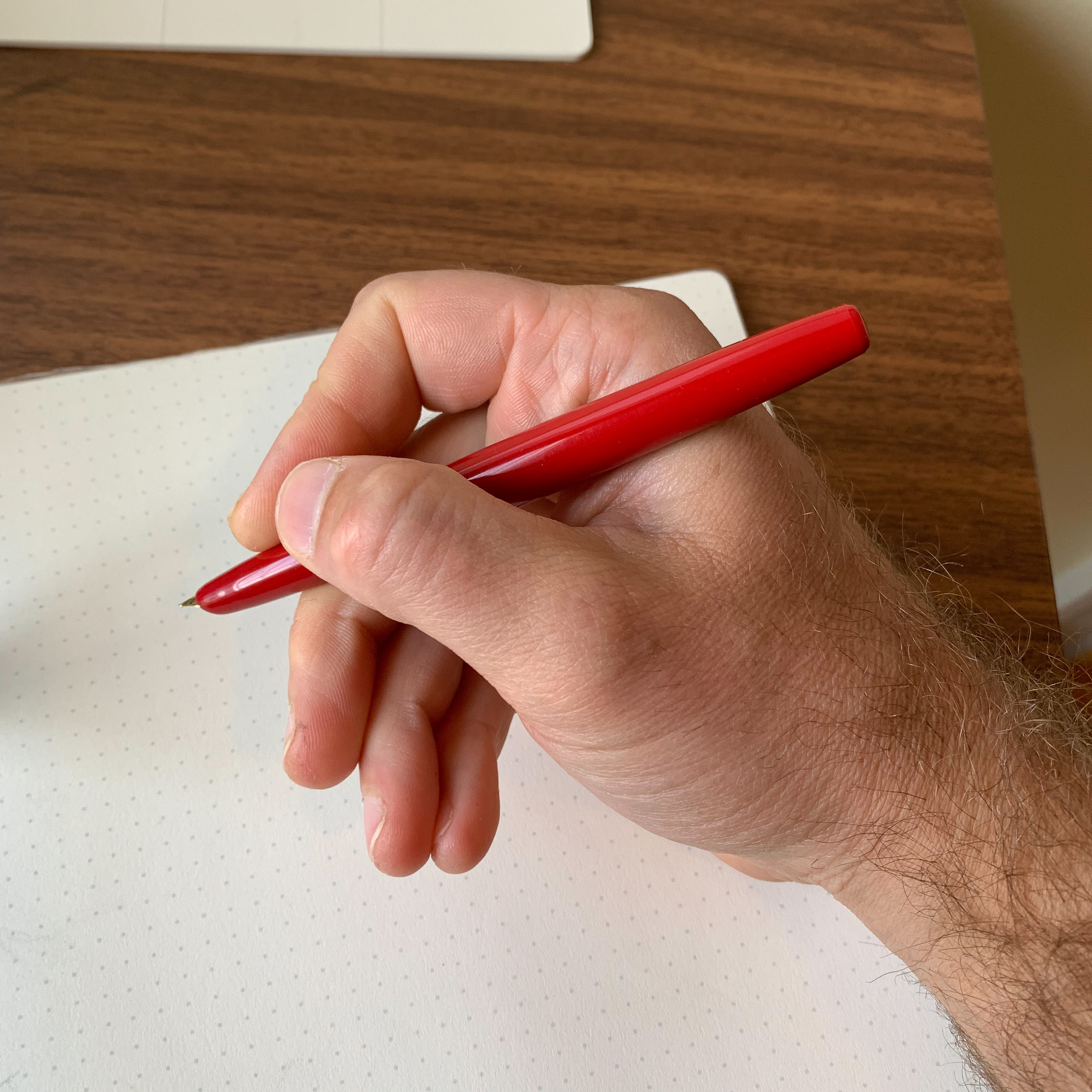I was on the Hobonichi Techo bandwagon for a while, using everyone’s favorite A6 Japanese planner as a one-page-a-day journal. I actually have three of them filled up from 2016-2018. Although I liked the Hobonichi, I wanted something slightly less structured, that offered me the flexibility to write more than a page on one day, and sometimes skip a day with less “journaling guilt.” Some days absolutely nothing of note happens, right, much less nothing that justifies wasting a full page of precious Tomoe River!
Enter the Nanami Paper Cafe Note B6. I’ve long enjoyed the Nanami Paper Seven Seas series, both the original “Writer” and the “Crossfield,” but a couple years back they released the “Cafe Note,” which is a smaller Tomoe River notebook measuring roughly 4 x 7 inches in what is referred to as the Japanese “Shinsho” size. You can read more about the background of the notebook on the Nanami Paper website, but what’s notable is that this size book was “created for rail commuters that spend a lot of time standing in trains and hanging out in cafes between trains or after work.” In other words, if you’re looking for a highly portable notebook that’s easy to slip into a bag and write with in a coffee shop, on a train or airplane, or anywhere else space is at a premium, consider the Cafe Note.
Small grid ruling with lots of boxes for organizing/summarizing notes? Count me in.
This layout works much better for me than the A6 Hobonichi. For starters, I appreciate that the Cafe Note is rather long and narrow, like these hardback Kunisawa “Find” notebooks, since I do much of my writing and note-taking in list or bullet format. Some people dislike the boxes at the top and bottom, but I find it convenient for organizing my notebook entries by date and topic. Finally, the grid/graph ruling is pretty small, but I have small handwriting so it works for me. Nanami Paper makes a lined version if grid isn’t your thing.
At the end of the day, I did miss having a classic diary or “daily journal” to record the mundane happenings of life. For Christmas my family gave me a Vanness gift card, which I cashed in on a Midori 5-Years Diary. To me, the beauty of this particular journal is how easy it is to use consistently. There’s a page for each day of the month (including February 29 for those years), with each page broken down into five sections containing five lines each. I don’t care how boring the day was, you can always find one thing to record, and I recall that after I had used my old Levenger 5-Year Journal for a few years it was quite enjoyable to write each day’s entry and see exactly what I was doing and/or thinking one or two years earlier. I don’t have a perfect record of daily entries, but I’ve been pretty good so far.
Noticing a trend here, size-wise?
Takeaways and Where to Buy
This particular setup has worked well for me in 2019, and in all likelihood I will continue it next year. The great thing about the Midori 5-Years Diary is - wait for it - that you only have to purchase it every five years, and the Nanami Paper Cafe Note has so many pages that it will also last you a long time. I do use an annual paper planner, the Jibun Techo 3-in-1 A5 Slim, for tracking tasks and logging things, but I plan to hold the review on that particular tool until the 2020 versions are released in the Fall.
I purchased my Midori 5-Year Diary from Vanness Pens, and it comes with either a red or black cover. At first glance, it’s not inexpensive at $42, but then again you’re only purchasing the Diary once every five years, so that’s $8 annually. The Nanami Paper Cafe Note “Slim B6” can be purchased directly from Nanami Paper, priced at $18, which to me represents an exceptional bargain given that you’re getting 384 pages of Tomoe River Paper. A ruled version is also available. If you’d like to add the Gfeller natural leather cover shown in my pictures, you can purchase it separately for $68.
Disclaimer: This post contains links to paid sponsors and affiliates.

